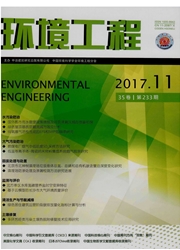

 中文摘要:
中文摘要:
研究选取典型家具涂装行业为采样点,对底漆涂装车间、面漆涂装车间、干燥车间和车间有组织排放的VOCs样品进行采集,分析VOCs的污染特征、臭氧生成潜势和恶臭指数。结果表明:底漆和面漆涂装车间的总VOCs浓度分别为3 051.0,2 098.0μg/m~3,车间有组织排放产生的VOCs浓度较低。各生产工艺环节VOCs均以苯系物为主(78.6%~92.4%),车间有组织排放由于活性炭对苯系物的吸附作用,烷烃和烯烃质量分数较其他工艺环节高。底漆、面漆和干燥车间VOCs的臭氧生成潜势较高(7 903.34~18 535.8μg/m~3),敏感性物种均为1,2,4-三甲基苯、邻-二甲苯等苯系物。苯系物的恶臭指数较大,底漆、面漆和干燥车间的恶臭指数高达25.809、12.525和9.076,对二乙基苯、正丙苯、对乙基甲苯的恶臭指数相对较高,存在一定程度的恶臭污染。
 英文摘要:
英文摘要:
The typical furniture painting industry was selected to collect VOCs samples emitted from four production processes, including primer painting workshop, finishing painting workshop, drying house, and workshop organized emission. The pollution characteristics of VOCs, ozone formation potential, and stench index were analyzed. The results indicated that total VOCs concentration emitted from primer and finishing painting workshop were 3 051.0, 2 098.0 μg/m3, respectively. The total VOCs concentration by workshop organized emission was lower. The main content of VOCs emitted from four production processes was aromatic (78.6% - 92. 4% ). The mass percent of alkane and alkene emitted from workshop organized emission were higher than the other processes due to the adsorption of activated carbon. The ozone formation potential of primer painting workshop, finishing painting workshop and drying house was higher (7 903.34 - 18 535.8 μg/m3) , and the sensitivity species were 1,2,4-trimethylbenzene, ortho-xylene, etc. The stench index of aromatic was high, with the value of 25. 809, 12. 525, and 9. 076 in primer painting workshop, finishing painting workshop, and drying house, respectively. The stench index of 1,4-diethylbenzene, propylbenzene, and p-ethyltoluene were relatively higher, indicating odor pollution to a certain extent.
 同期刊论文项目
同期刊论文项目
 同项目期刊论文
同项目期刊论文
 期刊信息
期刊信息
